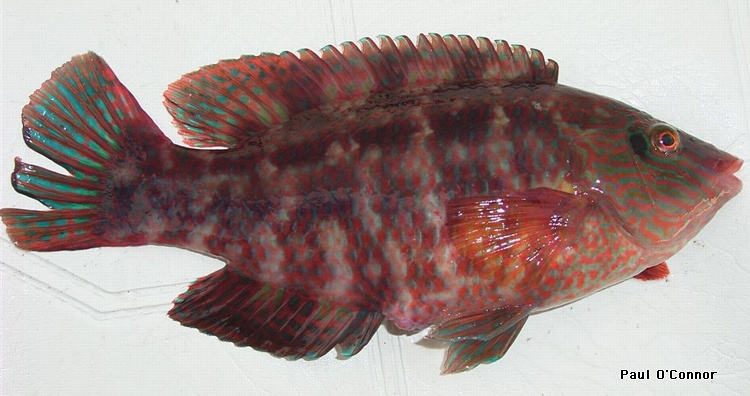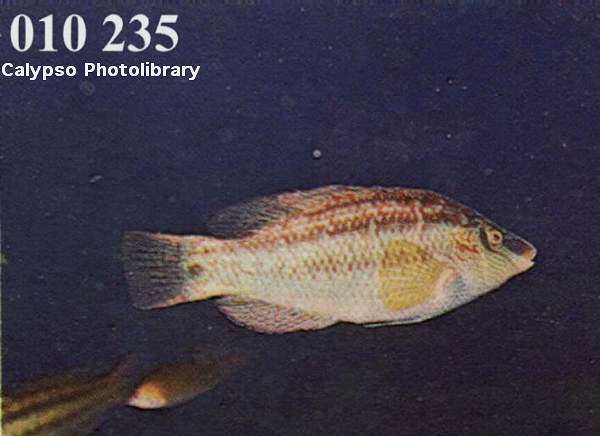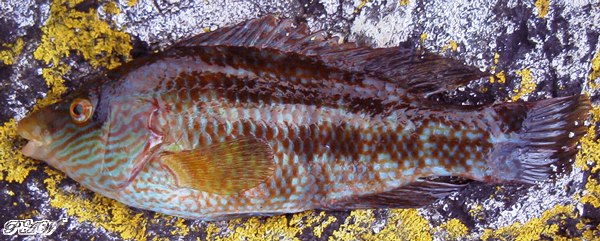Identification:
The body of this wrasse is deep set, with
a reasonably large rounded head, small eyes, and a large mouth with thick
lips. Small teeth are to be found in a single row in the jaws, with enlarged
teeth at the front.
The preoperculum (gill cover) is greatly serrated, both on the lower edges
(ventrally), and on it's rear (hind edge).
It sports a long based dorsal fin with two connected sections. The anterior
is composed of 14 to 17 membrane bound spines, whilst the posterior portion
has 8 to 10 branched rays. The anal fin normally has 3 anterior spines followed
by 8-10 branched rays.
The interorbit area is naked of scales. There is 1 scale behind the eye,
whilst the opercle region is more or less scaled. The body scales are large,
with 4.5 to 5.5 rows between the base of the dorsal fin and the lateral line.
Some 32 to 36 body scales run the length of the lateral line.
Colouration is highly variable, although usually green to greenish brown,
with darker pigmentation associated with the back and upper sides, whitish
belly, with body scales highlighted by brownish spacing. A black smudge is
to be found in front of the fin rays of the tail, below the lateral line.
There is often a crescent shaped dark patch behind the eye. Males have
blue/green, wavy or curved lines on the head.
Breeding:
Spawns from May into July, with the construction of algal nests
in intertidal crevices that are then guarded by the male. Hatch at about
2.5 to 3mm, are planktonic for a short time, before taking up residence
in the intertidal zone. Mature at 10cm (ie 2 to 3 years as females).
Habitat:
The most common intertidal wrasse, found over algae covered rocks, from the
mid-tide down to 30m or so. Often found in tidal pools from the mid-shore
down. Young wrasse often encountered in eel-grass beds.
Food:
Juveniles act as cleaner fish, and remove parasites from other fish species,
whilst older individuals feed on a range of molluscs and crustaceans.
Range:
Found all around the coasts of the UK.
Additional Notes:
|


